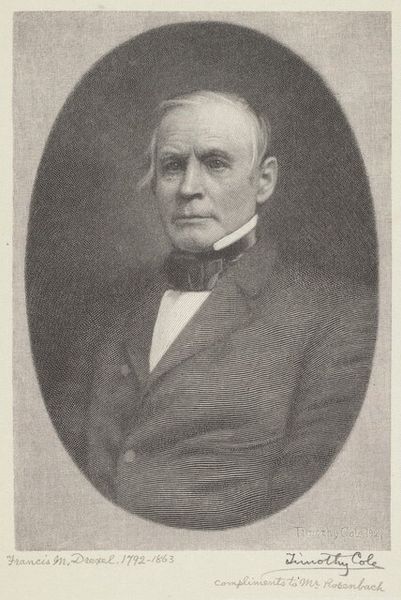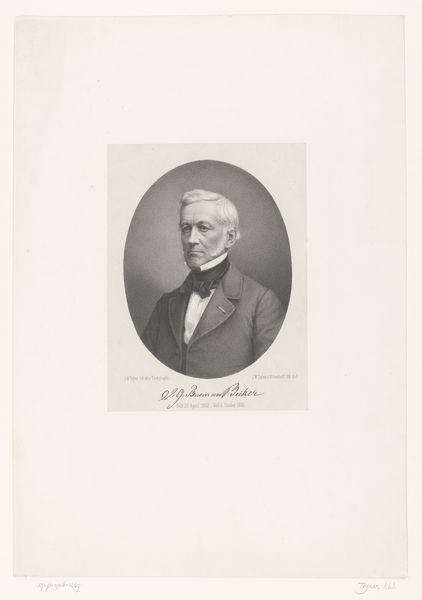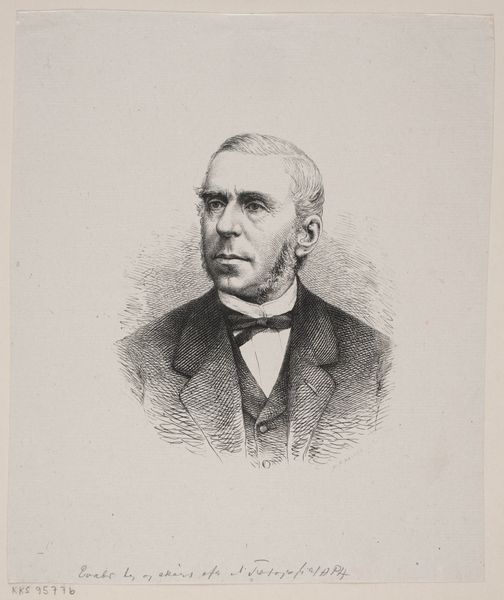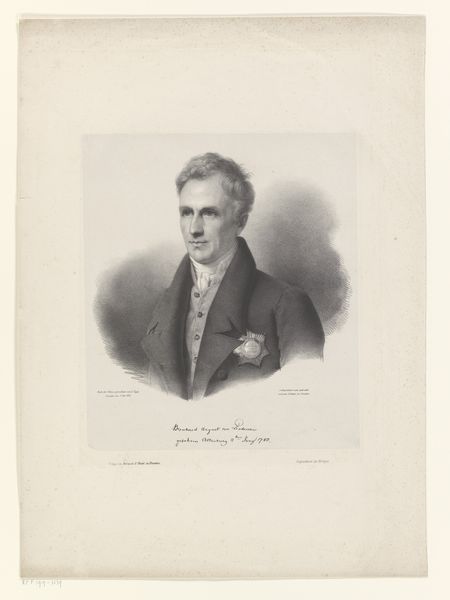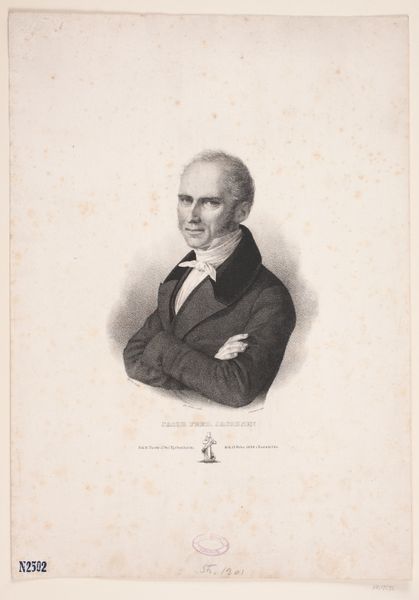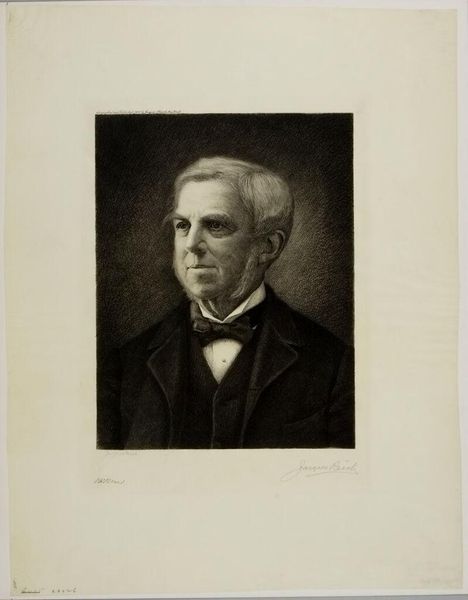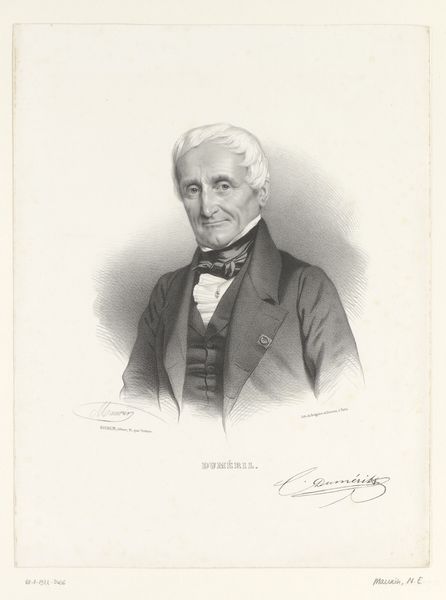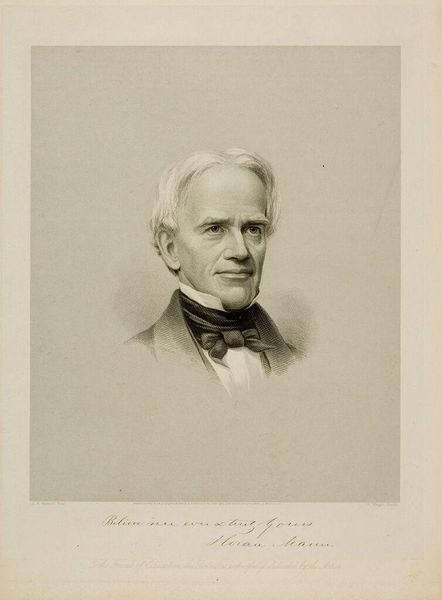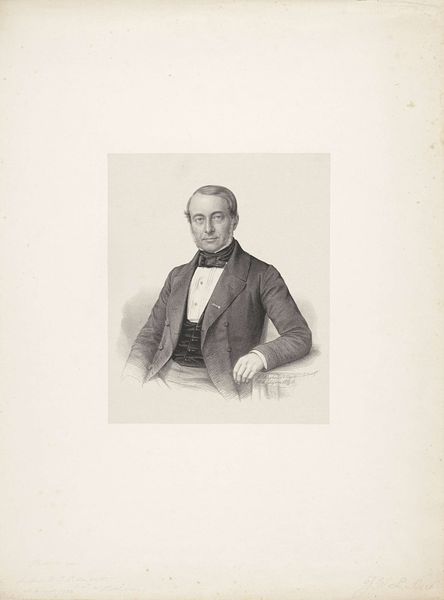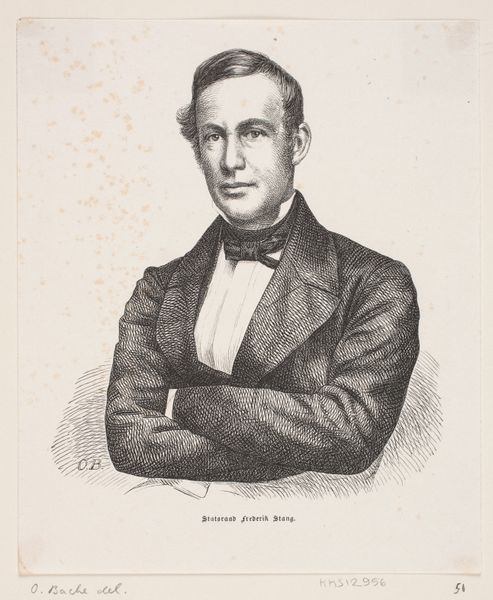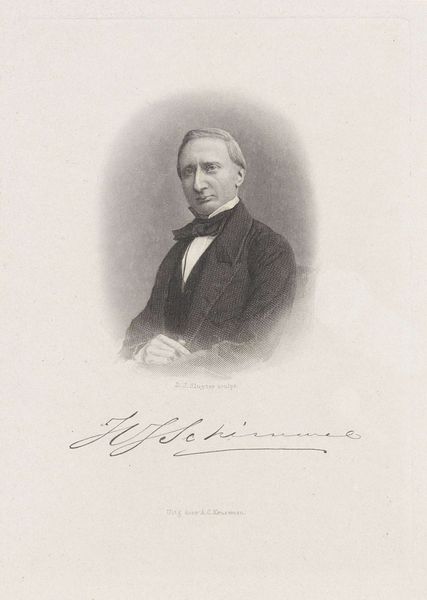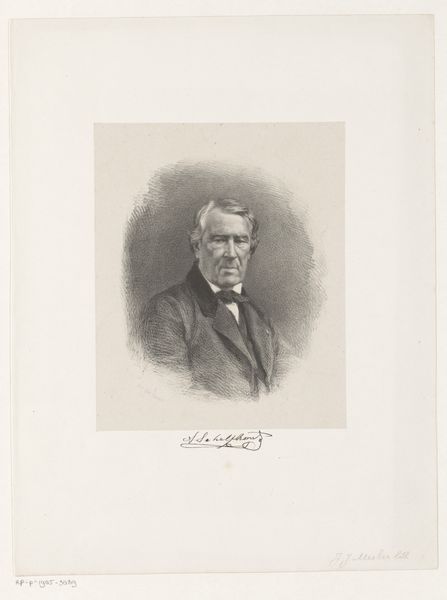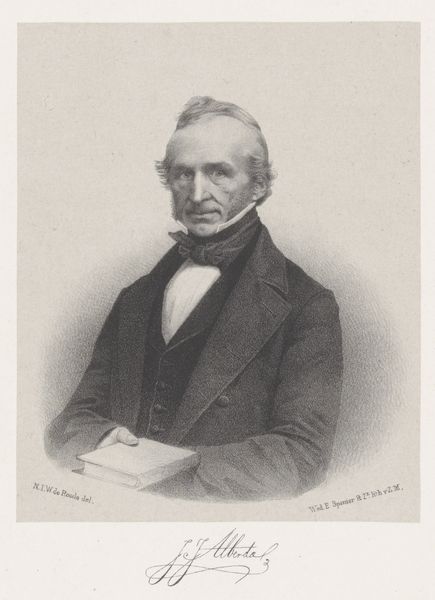
drawing, print, engraving
#
portrait
#
pencil drawn
#
drawing
# print
#
pencil sketch
#
caricature
#
portrait reference
#
pencil drawing
#
line
#
portrait drawing
#
academic-art
#
engraving
#
realism
Dimensions: height 166 mm, width 118 mm
Copyright: Rijks Museum: Open Domain
This portrait of Levinus Wilhelmus Christiaan Keuchenius was made by Johannes Walter as an engraving. As photography became increasingly common, reproductive engravings like this became increasingly important for disseminating images of prominent figures and artworks through visual codes of respectability. The Netherlands in the nineteenth century was a society undergoing significant political and social change, and here, the visual language of the formal portrait—the suit, the tie, and the averted gaze—spoke to the sitter’s role as a respectable member of that society. To further understand the role of this image, the historian must consider the context in which it was made, who it sought to reach, and what impact it had on contemporary audiences, using resources like periodicals and institutional archives. The image’s meaning is inevitably linked to its historical and cultural moment.
Comments
No comments
Be the first to comment and join the conversation on the ultimate creative platform.
